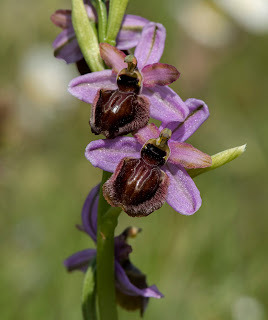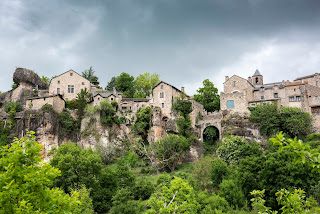Wild flower days around Coniston, South Lakes. YEWDALE WOODS
Coniston is a small village situated in the southern part of the Lake District National Park in Cumbria. The village sits on the western shore of Coniston Water and at the mouth of Coppermines Valley.
Coniston was called Coningseston in the 12th century, a name derived from konungur, the old Norse word for king....and tun the old Norse word for farmstead or village. This would give the village the title of the kings' estate. There is speculation that the village could have been the centre of a small Scandinavian mountain kingdom.
The village grew as a farming village and a centre for copper and slate mining.
The poet, artist and critic John Ruskin lived on the eastern side of the lake from 1871 to 1900 and chose to be buried in the local churchyard instead in Westminster Abbey.
Donald Campbell broke several World Water Speed records on the lake and died during another such attempt in 1967 as his jet boat Bluebird K7 crashed at 290mph.
Coniston is now a popular spot for hill-walking, rock-climbing, gully scrambling, cycling and fell running.
I live in Coniston, an off-comer from Lancashire , married to a born and bred Conistonian.
We love the fells and spend many hours walking in the surrounding hills and woods, but for me one of the other great attractions that never seems to be mentioned in the guidebooks are the wild flowers.
I was born in Lancashire, in a little place called Calder Vale .....a village that nestles in the hills that lie between Lancaster and Preston.....on the edge of the Forest of Bowland in a deep valley with only a single road providing access for vehicles.
Calder is thought to be derived from the old Norse word kaldr meaning cold. There used to be 2 cotton mills...only one is still operational. Its sole product being the red, black and white checked cloth used for headscarves in some Arab countries......it is said that Yasser Arafat wore scarves made in Calder Vale.
The mill owners built many of the terraced houses in the village....my grandparents lived in a mill house which, up until the day my Grandma died in 1980, had no hot water.
As children, my sisters, brother and I, attended the local Sunday School. Every year they would hand out prizes for good attendance. One year my prize was a copy of The Observers Book of Wildflowers and from that day on I was hooked. My passion for wildflowers started then and has continued unabated. No more Sunday School for me!
Calder Vale is now famous for its Bluebells. Every year tourists flock to this tiny village to marvel at the sight and perfume of these fabulous flowers.....the villagers organise Bluebell Teas on each Sunday in May, where cakes, sandwiches and local produce are sold
for charity and the upkeep of the village hall.
So, digression over, I return to Coniston. The purpose of this section of my blog is to share, with anyone who is prepared to stop and look, some of the wildflower delights of my adopted home.
The format will be....a brief description of a walk in the area plus photographs of some of the wild flowers you can expect to see and when you can expect to see them.
Yewdale Woods
From Coniston Village follow the road signposted Coniston Coppermines. At the top of the hill....and at the end of the road, turn right through a gate....out across the bottom of the fell and into the woods. The track is squeezed between the road and the crags of Yewdale fells and the walk can be particularly stunning in the springtime when the woods are carpeted with Bluebells.
You will cross 3 wooden footbridges...after which you turn right and leave the woods, cross the road and walk towards Low Yewdale. Continue on this tract until you meet the main road to Hawkshead.....turn right again and return to the village. A nice little detour off to the left leads to the Pier Cottage and the lake with the added attraction of refreshments at Bluebird Cafe.
Coniston was called Coningseston in the 12th century, a name derived from konungur, the old Norse word for king....and tun the old Norse word for farmstead or village. This would give the village the title of the kings' estate. There is speculation that the village could have been the centre of a small Scandinavian mountain kingdom.
The village grew as a farming village and a centre for copper and slate mining.
The poet, artist and critic John Ruskin lived on the eastern side of the lake from 1871 to 1900 and chose to be buried in the local churchyard instead in Westminster Abbey.
Donald Campbell broke several World Water Speed records on the lake and died during another such attempt in 1967 as his jet boat Bluebird K7 crashed at 290mph.
Coniston is now a popular spot for hill-walking, rock-climbing, gully scrambling, cycling and fell running.
I live in Coniston, an off-comer from Lancashire , married to a born and bred Conistonian.
We love the fells and spend many hours walking in the surrounding hills and woods, but for me one of the other great attractions that never seems to be mentioned in the guidebooks are the wild flowers.
I was born in Lancashire, in a little place called Calder Vale .....a village that nestles in the hills that lie between Lancaster and Preston.....on the edge of the Forest of Bowland in a deep valley with only a single road providing access for vehicles.
Calder is thought to be derived from the old Norse word kaldr meaning cold. There used to be 2 cotton mills...only one is still operational. Its sole product being the red, black and white checked cloth used for headscarves in some Arab countries......it is said that Yasser Arafat wore scarves made in Calder Vale.
The mill owners built many of the terraced houses in the village....my grandparents lived in a mill house which, up until the day my Grandma died in 1980, had no hot water.
As children, my sisters, brother and I, attended the local Sunday School. Every year they would hand out prizes for good attendance. One year my prize was a copy of The Observers Book of Wildflowers and from that day on I was hooked. My passion for wildflowers started then and has continued unabated. No more Sunday School for me!
Calder Vale is now famous for its Bluebells. Every year tourists flock to this tiny village to marvel at the sight and perfume of these fabulous flowers.....the villagers organise Bluebell Teas on each Sunday in May, where cakes, sandwiches and local produce are sold
for charity and the upkeep of the village hall.
 |
| Hyacinthoides non-scripta, Bluebell |
So, digression over, I return to Coniston. The purpose of this section of my blog is to share, with anyone who is prepared to stop and look, some of the wildflower delights of my adopted home.
The format will be....a brief description of a walk in the area plus photographs of some of the wild flowers you can expect to see and when you can expect to see them.
Yewdale Woods
From Coniston Village follow the road signposted Coniston Coppermines. At the top of the hill....and at the end of the road, turn right through a gate....out across the bottom of the fell and into the woods. The track is squeezed between the road and the crags of Yewdale fells and the walk can be particularly stunning in the springtime when the woods are carpeted with Bluebells.
You will cross 3 wooden footbridges...after which you turn right and leave the woods, cross the road and walk towards Low Yewdale. Continue on this tract until you meet the main road to Hawkshead.....turn right again and return to the village. A nice little detour off to the left leads to the Pier Cottage and the lake with the added attraction of refreshments at Bluebird Cafe.
 |
| Hyacinthoides non-scripta (April to June) and Primula vulgaris (March to May) |
 |
| Mercurialis perennis, Dog's mercury March to May |
 |
| An early white violet April to May |
 |
| Corylus avellana, Hazel January to March |
 |
| Hazel flower and Catkin January to March |
 |
| Narcissus pseudonarcissus, Wild Daffodil March to April |
 |
| Crocosmia crocosmiiflora, Montbretia July to October |
 |
| Epipactis helleborine, Broad-leaved helleborine July to August |
 |
| Lonicera periclymenum, Honeysuckle June to September |
 |
| Primula vulgaris, Primrose March to May |
 |
| Ficaria verna, Lesser celandine February to May |
 |
| Impatiens noli-tangere, Touch-me-not balsam July to September |
 |
| Meconopsis cambrica, Welsh poppy May to August |
 |
| Digitalis purpurea, Foxglove June to September |
 |
| Veronica April to July |
 |
| Bluebells |
 |
| Apple blossom April to May |
 |
| Lysimachia nemorum, Yellow pimpernel May to September |
 |
| Arum maculatum, Lords and Ladies April to early June |
 |
| Oxalis acetosella, Wood sorrel April to May |
 |
| Vicia sepium, Bush vetch April to October |
 |
| Anemone nemorosa, Wood anemone April to May |
 |
| Anemone nemorosa |
 |
| Ulex europaeus, Gorse January to December |
 |
| Viola riviniana, Common Dog Violet March to May |
 |
| Prunus spinosa, Blackthorn March to May |
 |
| Bellis perennis, Daisy March to October |
 |
| Cymbalaria muralis, Ivy-leaved Toadflax (White variety) May to September |
 |
| Potentilla sterilis, Barren strawberry February to May |
 |
| Chrysosplenium oppositifolium, Opposite-leaved Golden Saxifrage February to June |
 |
| Not a flower I know but this splendid Oak Tree deserves to be in here |
 |
| Arctium minus, Lesser burdock July to September |
 |
| Corylus avellana, Hazel (nuts) August to October |
 |
| Lythrum salicaria, Purple loosestrife June to August |


Comments
Post a Comment